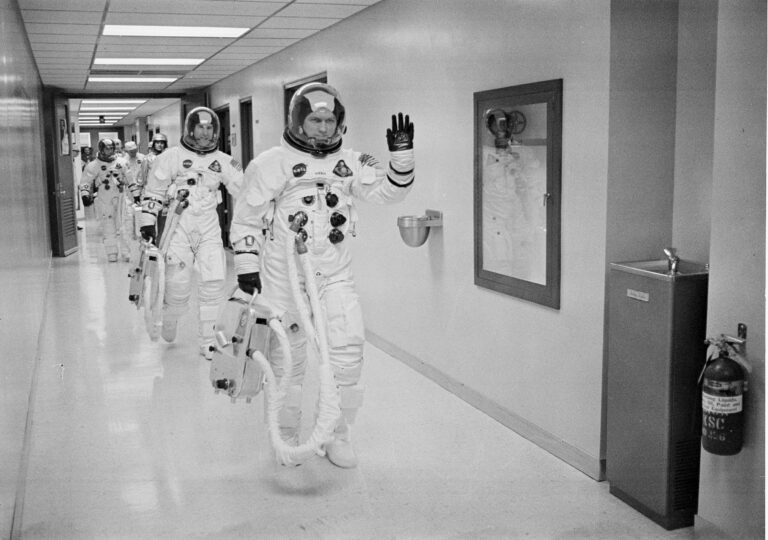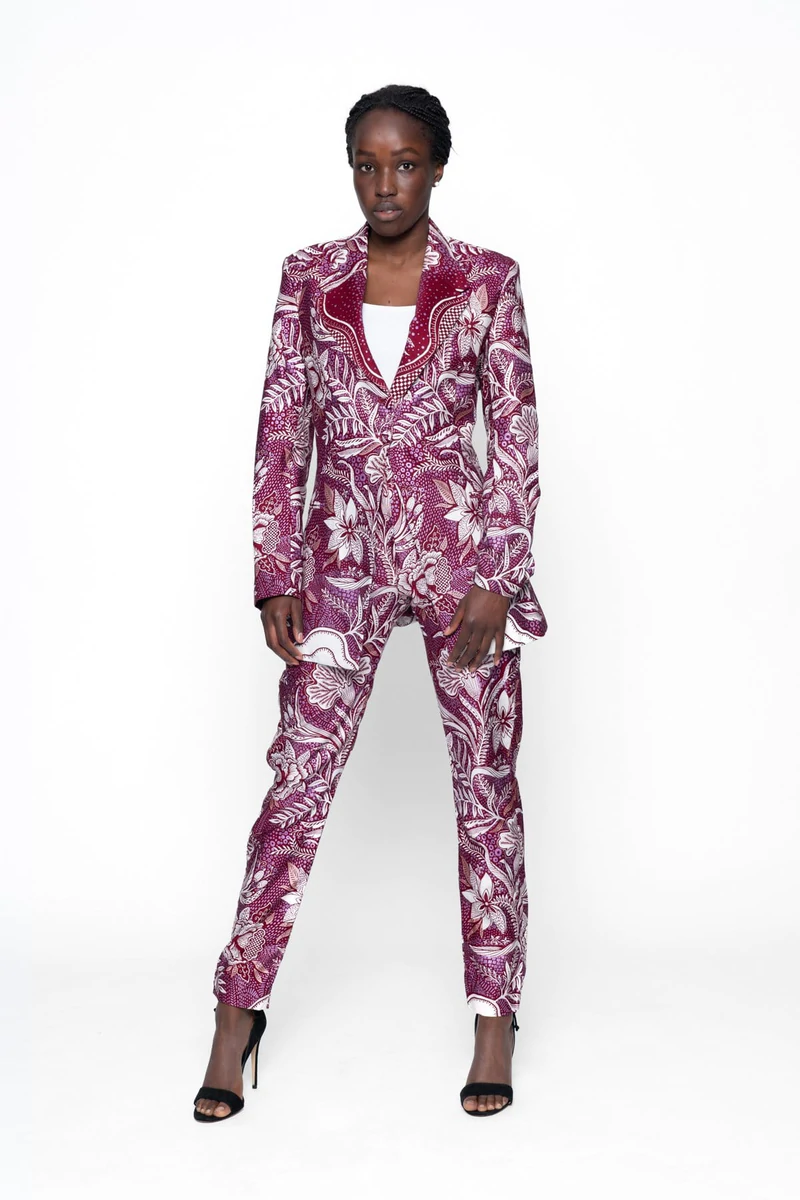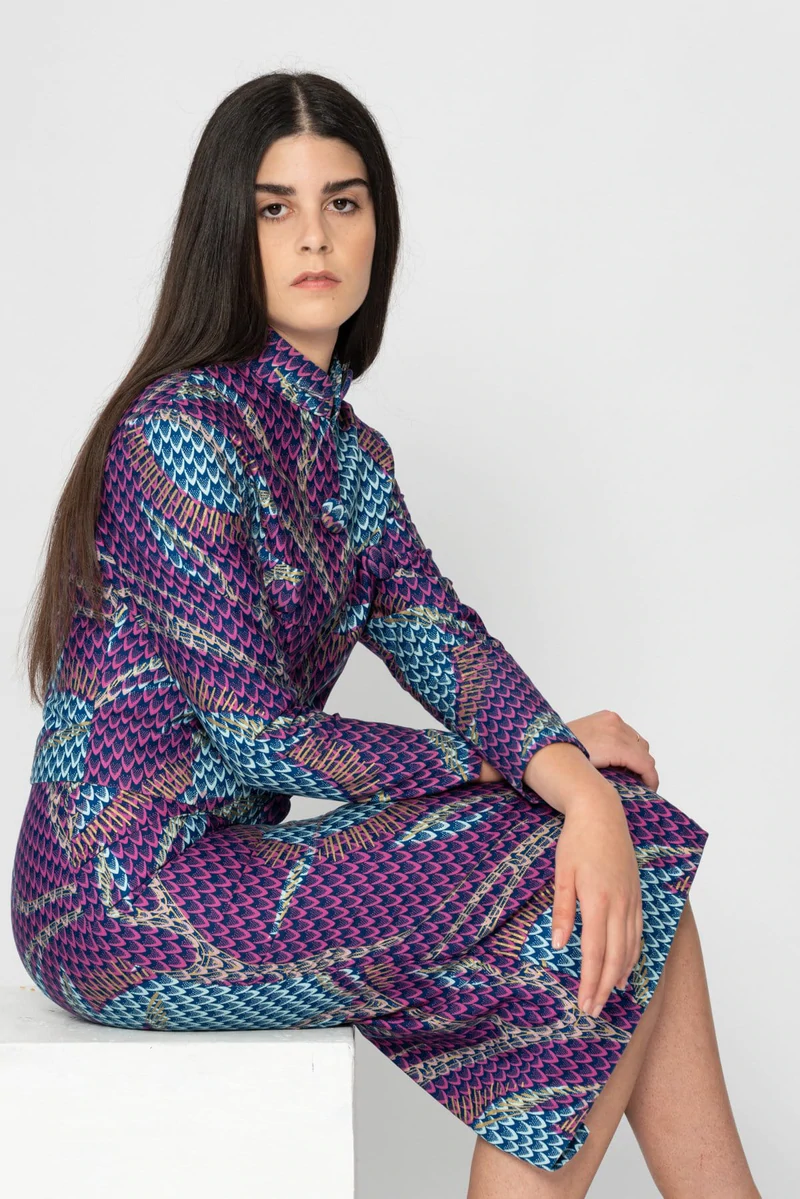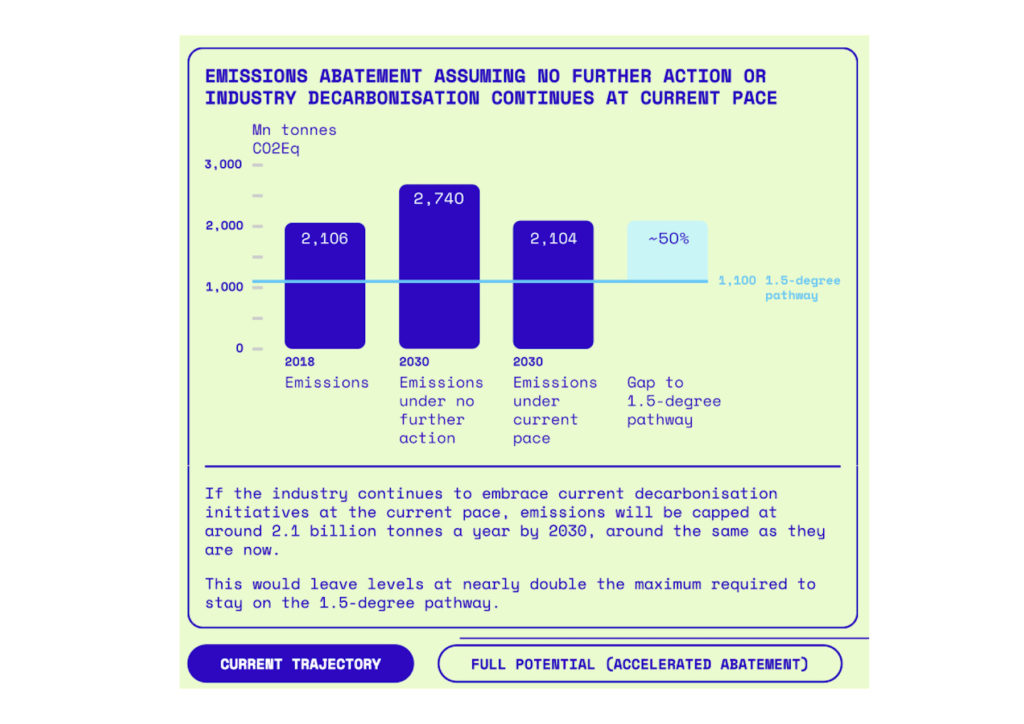We have known for a long time that the fashion industry is having a detrimental impact on the planet – the global fashion industry accounted for around 2.1 billion tonnes of greenhouse gas emissions in 2018 (4 percent of the world’s total); and it’s estimated to produce 20 percent of global wastewater. But our changing environment is having an impact on the fashion industry too. As the effects of climate change begin to deepen, businesses are facing new challenges caused by extreme weather.
How we mitigate the impact of the fashion industry on the planet? How can businesses adapt to climate change? And, most important of all, can fashion exist without harming the planet and without having to offset its carbon footprint?
Mitigate
It’s clear that the fashion industry needs to change – and profoundly – in order to meet climate targets. To stay on the 1.5-degree pathway established by the Paris Agreement, the industry needs to cut its greenhouse gas emissions by 1.1 billion tonnes; if we continue on our current trajectory, we’ll be producing double that by 2030.
With everything made to order, the couture model has traditionally been the most environmentally sustainable way to produce and consume fashion – something Balenciaga’s Demna Gvasalia explored in a recent Business of Fashion podcast. To be financially viable, however, couture houses rely on ready-to-wear sales (not to mention makeup and fragrance). In effect, this means that a small elite gets to enjoy sustainably produced high-end fashion powered by mass-market sales and all the associated environmental costs.
Circular business models can go some way towards mitigating the impact of the fashion industry on the planet, and the GFA and McKinsey calculated that together, re-commerce, rental and repair models “could deliver around 143 million tonnes of GHG emissions savings in 2030”. These models are growing in popularity: the UK Prime Minister’s wife, Carrie Johnson, chose to get married in a rented dress in May 2021, and it’s estimated that the UK rental market will be worth £2.9 billion by 2029, while US company Rent the Runway is now valued at $750 million.
Overproduction is one of the fashion industry’s biggest challenges – it’s estimated that 30 percent of new clothing is never sold, vastly increasing its environmental footprint. Luxury brand Burberry made headlines for all the wrong reasons when it was revealed that in 2017 it chose to burn £28.6 million of clothing, accessories and beauty products rather than diminish its brand by selling them at a discount. As a result, the industry is also increasingly embracing a pre-order model, with brands such as Kitri in the UK and Telfar and Khaite in the US producing limited runs and making products to order so that we don’t build up unsold inventory.


Adapt
As an industry, how can we adapt to the new reality of climate change? It’s not just a question of changing the way we operate in order to meet climate commitments, but of factoring in the risks associated with climate change and adapting to our new reality – building up flood protection, for example, to ensure that a disruptive event does not affect the entire supply chain.
The first step in reducing our impact is to measure what we are creating in the first place – and here, we need to take consumer behaviour into account. The environmental impact of a garment is not just found in the production process and materials used, and it doesn’t end when a customer takes it home from the store. Every time a customer washes a piece of clothing, leaves it unworn in the closet, or even throws it away, they’re contributing to its carbon footprint.
That’s why it’s important to create clear tools to calculate the environmental impact of a garment that covers its entire lifecycle. Climate activist Livia Firth of Eco-Age led the way with #30wearschallenge, an initiative that encourates consumers to wear each piece of clothing at least 30 times. This small actionable effort is a simple way for individuals to make a difference, and has inspired tools such as WearMe30Times, an initiative from Maakola and Genuine Way, that uses blockchain to help consumers track the number of times they wear each garment.
It’s technology, in fact, that points to a way forward. Online fitting rooms can lessen the environmental impact of e-commerce returns, which often end up in landfill. In 2018, for example, Amazon patented a smart mirror that lets you see yourself in virtual clothing. However, these are hybrid solutions at best – they can mitigate some of the effects of producing, selling and shipping physical goods but ultimately we need a more radical solution.
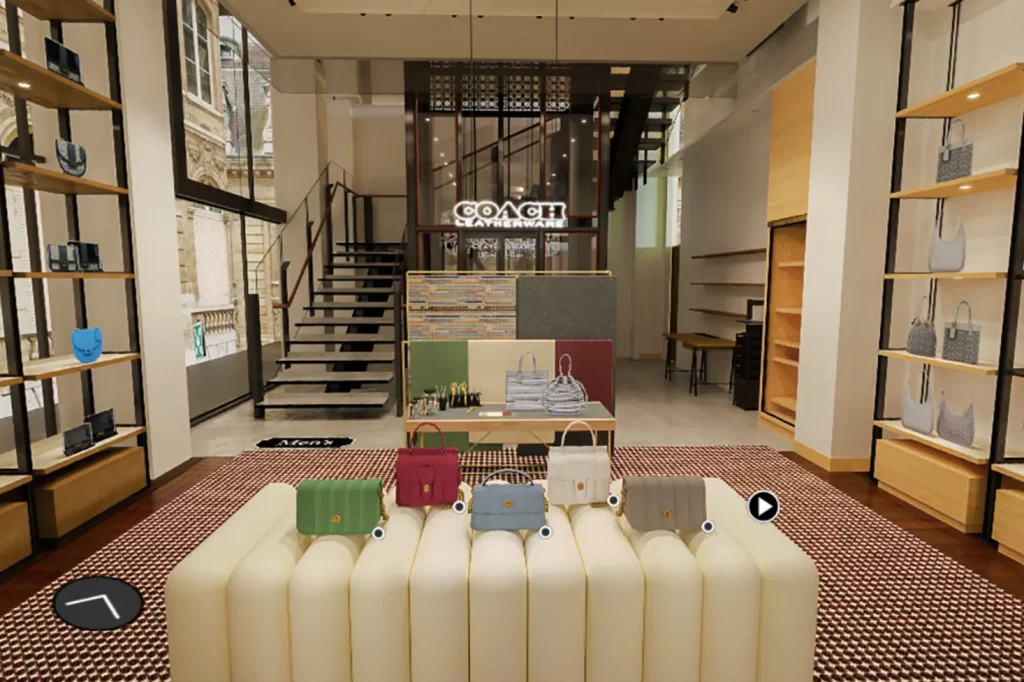

Transform
As leaders gather in Glasgow for COP26, it’s clear that we’re hurtling towards a climate emergency; it’s estimated that we currently consume 60 percent more ecological resources than the planet can regenerate – we’d need 1.6 Earths to keep up. As one of the world’s biggest polluters, the fashion industry needs to find a shift in purpose: not just from overproduction to a more thoughtful way of manufacturing clothing, but from a purely physical model to one that transcends the physical world.
The most important thing is to keep fashion – the spirit, and purpose, of fashion – alive through revolutionary change. Revolutions are fundamentally built on reinventing entire established systems, from a different perspective. Fashion is no different in this case.
Fashion, after all, is about more than the cloth it’s cut from; it’s a way for consumers to define themselves, to build culture and communities. Fashion brings people together, and not just through the physical end product. Ultimately, fashion is about creativity and self expression, and it’s something that is increasingly playing out in the digital world: the metaverse. Balenciaga recently partnered with Fortnite on a range of in-game clothing (with real-world pieces to match), and Gucci recently dipped a toe into the world of NFTs with the release of its first virtual sneakers.
It’s a shift that points to a radical way forward. If we take into consideration the consumer needs – for the community, self expression, and a shared culture – that have been driving this industry for all these years, we see that when we think about sustainability, we need to reconsider our options. At its core, the real problem isn’t how to produce clothing more sustainably, which raw materials to use or how to deal with excess inventory, but rather: how can we offer consumers something new and beautiful?
To truly change, we need to give fashion a consciousness of its own – one that might get formed in the metaverse. Of course, we all still need to get dressed; there will always be a need for a thoughtful, conscious, capsule closet. But with virtual wardrobes to help us explore fashion through a digital lens, we can form our digital identities and build a shared culture without paying an environmental price.
